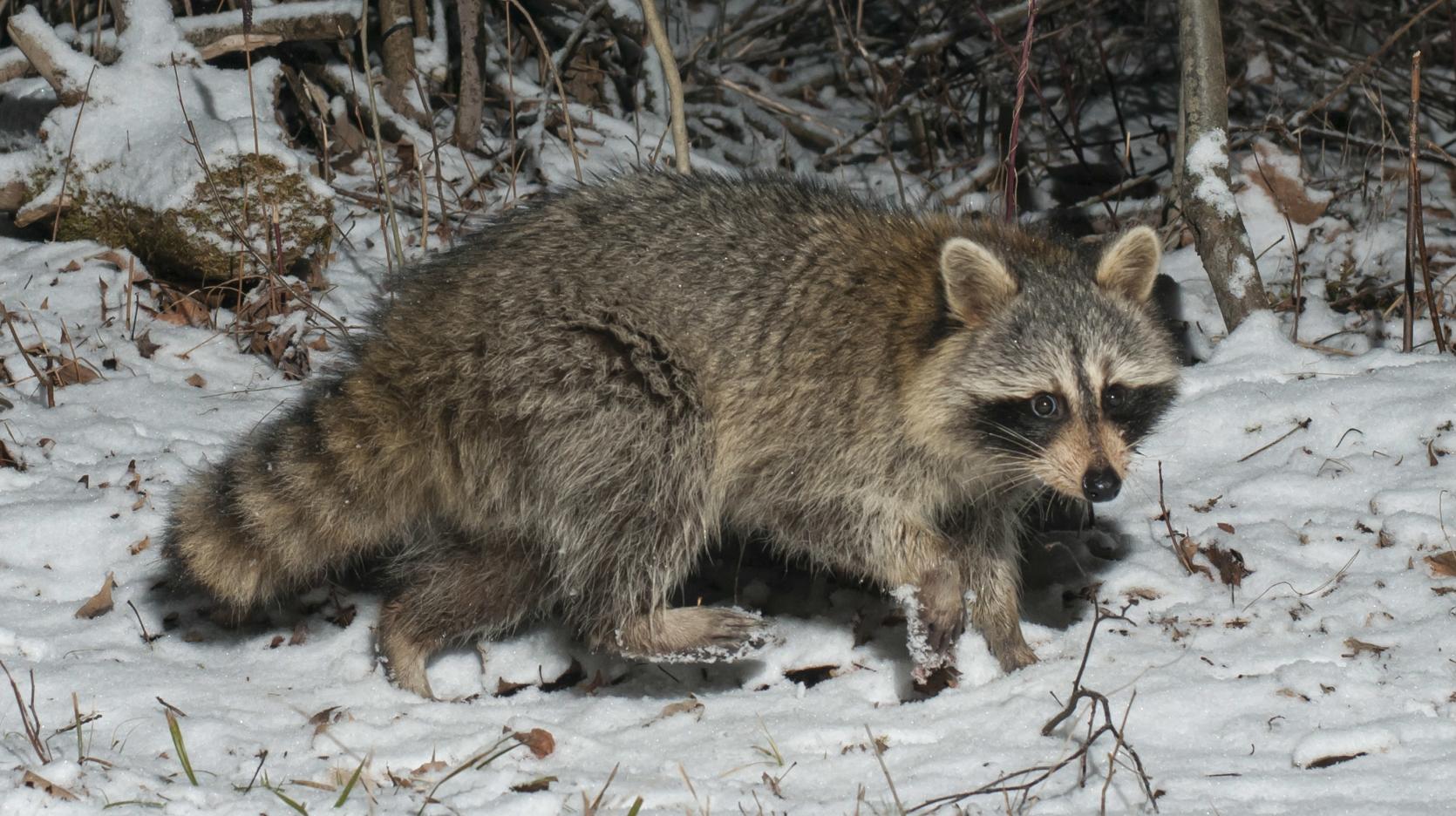- Division of Fisheries and Wildlife
Media Contact
Marion Larson, MassWildlife

The winter cold might have you worried for wildlife, wondering where they go or how they find food in harsh conditions. Wildlife in New England have survived cold winters for many thousands of years, with a host of different adaptations to survive cold temperatures, scarce food supplies, and deep snow. It’s important to remember wild animals have survived over time without the help of people and will continue to do so. Although most people who feed wildlife have good intentions, they may not realize providing food for wildlife often does more harm than good by disrupting natural behaviors. Next time you think you should interfere to “help” wildlife in the cold, rest assured that fish and wildlife are well suited to naturally cope with Massachusetts winters using some of the following techniques.
Fattening up: In fall, many animals go on a feeding frenzy, fattening up in preparation for the cold winter weather; acorns, beech nuts, and other fatty foods will be consumed by bears, squirrels, deer, and chipmunks. Seals and other marine mammals have blubber to protect them in the cold ocean. A solid layer of fat also protects ducks and geese from cold.
Finding food: The animals that are active and on the move during winter need to keep on eating; coyotes, fishers, and bobcats, as well as hawks and owls, will hunt for food or scavenge on carcasses of dead animals. Deer and moose undergo a change in their digestive system to feed on twigs, buds, and bark. They, as well as turkeys, will dig through the snow looking for nuts and acorns from the previous fall. Chickadees, woodpeckers, sparrows, and finches inspect the ground and crevices in tree bark for overwintering insects, seeds, and lichens.
Staying warm: Mammals grow a thick, dense winter coat to cope with cold temperatures. Coyotes and raccoons appear to be much larger in winter due to their thick winter coats. Aquatic mammals like otter, beaver, mink, and muskrat have a double layer coat with extremely dense fine hairs near the body, protected by the visible longer guard hairs. These animals waterproof their fur by regularly rubbing body oils on the fur—allowing water to slide off instead of soaking in. The winter coats of deer and moose have hollow hairs, which trap air, adding a layer of insulation. You can see its effectiveness when you see snowfall building up on their backs instead of melting. Birds will fluff their feathers out more, trapping air which acts as insulation, much like a down jacket. Ducks and geese not only have down feathers to protect them, they too rub oils on their feathers to keep water sliding off their back instead of soaking in close to their body.
Conserving energy: Deer will limit their travels to conserve energy and fat reserves. They naturally seek out areas near food and water with tree cover, which offers shallower snow, milder temperatures, and less wind. Because fish are cold-blooded, they don’t have to worry about generating heat or staying warm. Fish do slow down in winter and find habitat that doesn’t require them to swim hard or move fast. The two main concerns for fish in the winter are rapid changes in temperature and running out of oxygen. Fish can’t regulate their body temperature like mammals, so if the temperature rises or drops too quickly, they can suffer mortality. Additionally, thick ice and heavy snow cover can block sunlight from reaching water, decreasing oxygen levels and causing a natural winter fish kill.
Hibernating and sleeping: Bears typically enter their winter dens between November and mid-December, and exit between March and April. Bears commonly den under brush piles, in mountain laurel bushes, or under fallen trees or rocks. The snow cover acts as another layer of cold protection. If food is available, bears that are not pregnant may remain active throughout the winter. Frogs, turtles, and other reptiles and amphibians will burrow into the pond mud—they may still “freeze” but have the ability to thaw out for the spring. Woodchucks are “true” hibernators, meaning their heartbeat slows and their body temperature lowers, which conserves energy as they slowly burn through their fat in the long months of winter. Skunks will sleep through much of the winter, but when temperatures go above freezing, they may wake up and move about looking for food.
Tunneling in: Ruffed grouse will tunnel into the snow during the night, making their own shelter to stay warm. Mice, voles, and other small mammals will create tunnel passages through the snow, serving several purposes—insulation from cold, escaping detection from predators, and feeding on grasses and seeds from the past year's growing season.
Defying the ice: In fall, beavers cut down trees to sink a large pile of branches in the water as their winter food pantry. Their iced-over lodge made of sticks, mud, and rocks have only an underwater entrance, providing protection against predators. When it's time to eat, beavers slip into the water, swim over to the "pantry" and bring back branches and twigs, peeling and eating the bark with their sharp teeth and munching on twigs.
Now that you know how wildlife copes with the cold, remember the best way to help them make it through the winter is to step back and allow their instincts to take over.
